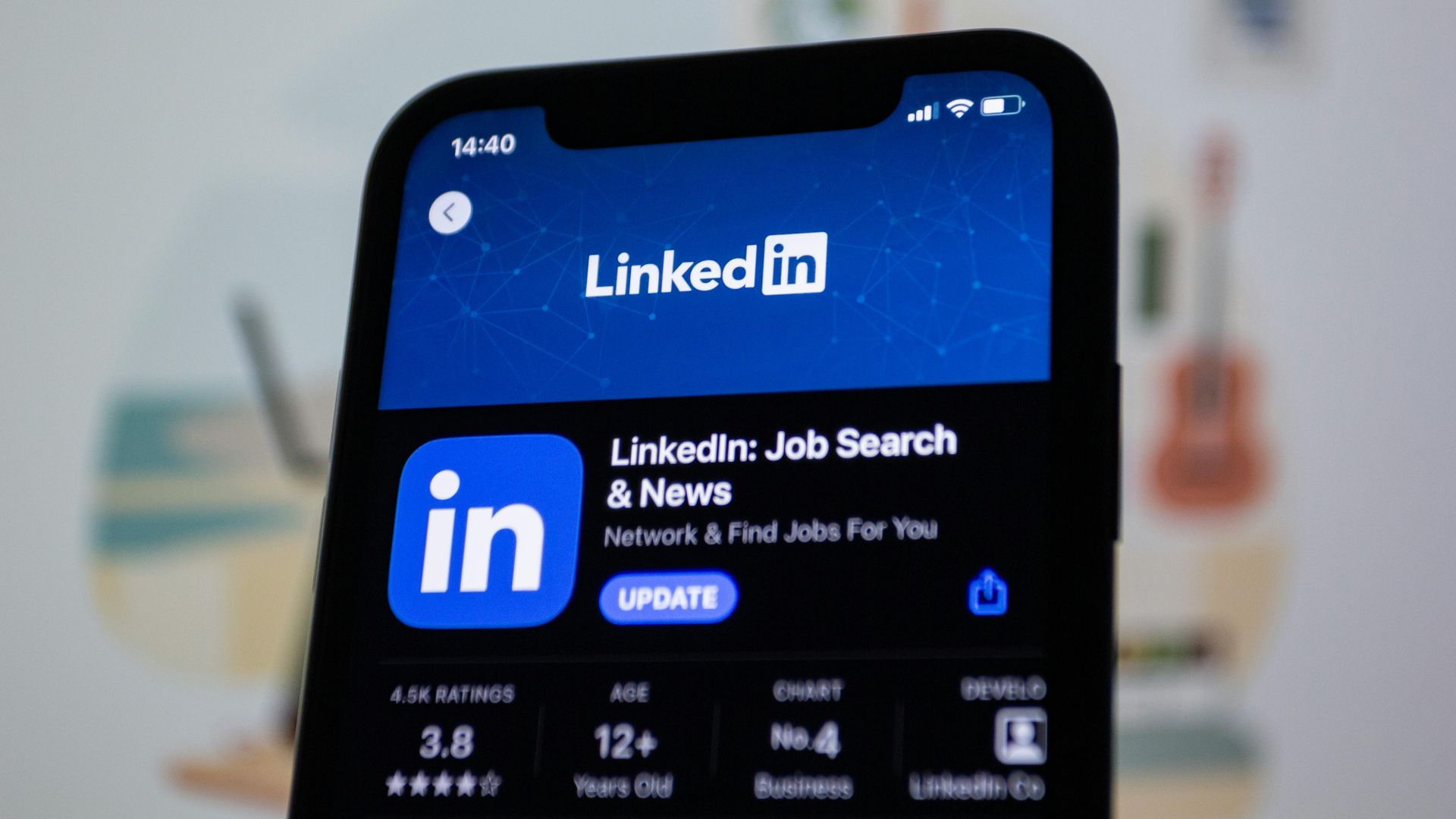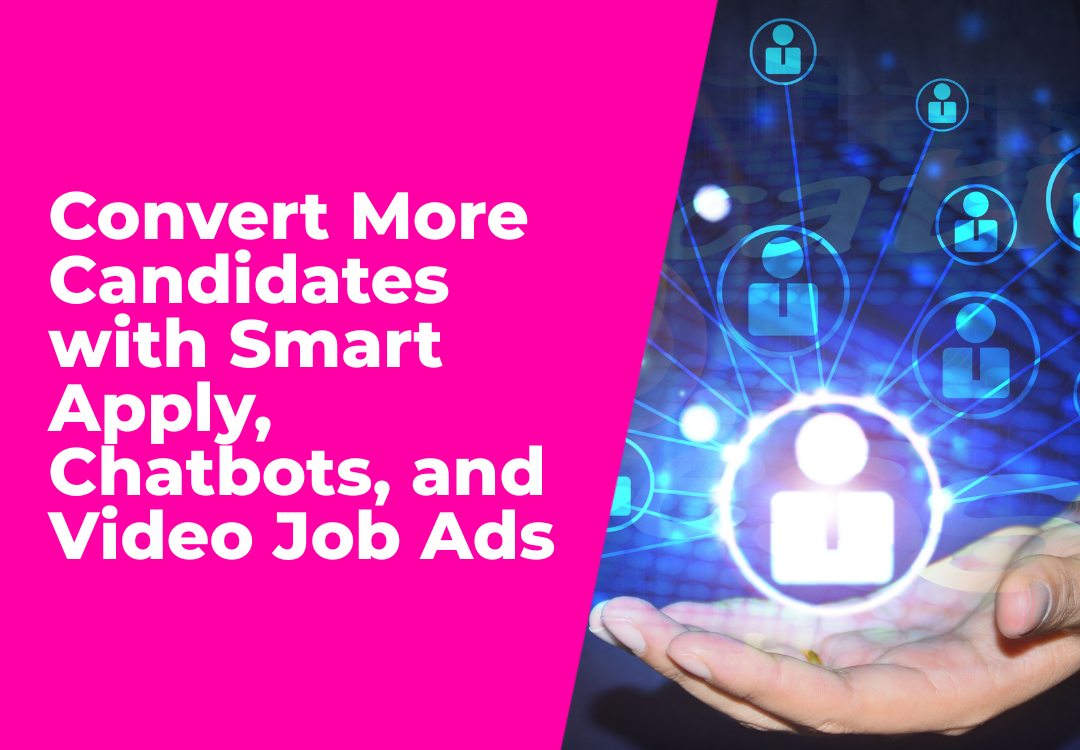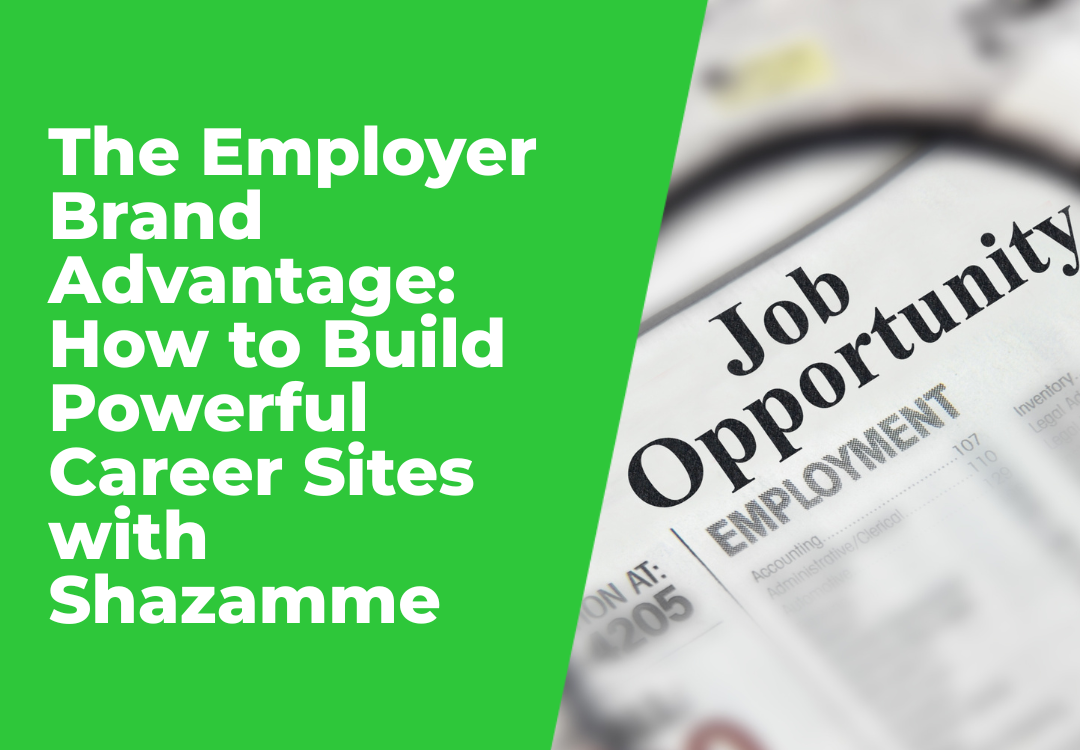The Ultimate 2025 Recruitment Marketing Strategy: Why Your Website and Integrations Are More Important Than Ever!
Nicole Clarke • June 27, 2025
The Ultimate Recruitment Marketing Strategy

If you're still treating your recruitment website as a static brochure, you're missing one of the biggest opportunities to win clients and candidates in 2025.
In a world of AI-powered search, savvy job seekers and employers aren’t browsing page by page — they’re asking Google, ChatGPT, or Bing Copilot questions.
If your recruitment marketing strategy doesn't put your website at the heart of your digital ecosystem, it’s time for a serious rethink.
Why Your Website Is the Core of Your Recruitment Marketing Strategy
Every strong recruiting strategy starts with one critical question: “Can we be found online by the right employers and candidates, and will they convert once they land on our website?” If the answer isn't a confident yes , here’s why:
- Outdated recruiter website design
fails to meet modern user expectations
- Poor SEO and AEO structure
keeps you invisible in AI search results
- Lack of ATS integrations
means you miss out on automation and data-driven insight
- Slow, clunky tech
makes updates difficult, delaying critical campaigns
What Modern Recruiting Strategy Looks Like (and Why Websites Play a Central Role)
A successful recruiting strategy in 2025 must include:
A Conversion-First Website Design
Built specifically for recruiters — fast, mobile-friendly, and designed to get employer enquiries and candidate applications.
Structured for AEO (AI Engine Optimization)
Search is changing. Your site must be structured for AI tools with:
- Schema markup (jobs, blogs, reviews)
- Internal linking between job ads, recruiter bios, salary guides
- FAQs and structured content for natural language queries
Powerful Integrations That Automate and Scale
Whether you use Bullhorn, JobAdder, Loxo, Salesforce, Vincere or others, your ATS integration must go beyond job feeds. Modern integrations should:
- Map custom fields (e.g., source tracking, DEI data, referrals)
- Support advanced forms (employer leads, refer-a-friend, job alerts)
- Allow you to build campaign landing pages
without needing devs
How Website Design Impacts Recruitment Marketing Strategy
The design of your website directly affects your:
- Employer attraction
- Talent attraction
- Campaign ROI
- Time-to-fill metrics
Need to launch a salary guide? Easy.
Want a co-branded landing page for an employer? Done.
Looking to track which page brought in that $50K placement? We’ve got that covered.
What Makes Shazamme Different?
We power over 800+ recruitment agencies globally with:
Advanced SEO & AEO Structure
Built from the ground up for search engine success.
Next-Level ATS Integrations
Drag-and-drop field mapping and powerful data syncs.
AI-Powered Content Tools
Write, rewrite, and translate content in minutes.
Built-In Analytics & Conversion Tracking
Know what’s working. Scale what’s winning.
No-Code Easy Page Builder
Your team controls content, forms, job boards, and campaigns — no devs needed.
Enterprise-Grade Security
ISO 27001 certified. Used by some of the world’s largest staffing firms.
Final Thoughts: Adapt or Miss Out
Recruitment marketing is no longer about “just having a website.”
It’s about having the right website technology that can adapt, integrate, convert, and evolve.
If you’re serious about improving your recruiting strategy this year, start by upgrading the platform that holds everything together — your website.
�55357;�56492; Want to see what a next-gen recruitment website looks like?
✅ Book your free website audit or demo now – No pressure, just answers.
✅ Or explore more at www.shazamme.com.au
Don't be a stranger, we love helping recruitment agencies be more successful online!
FAQs
What is the best recruitment marketing strategy in 2025?
The best recruitment marketing strategy includes a fast, conversion-optimized website, strong SEO/AEO, personalized landing pages, and deep ATS integrations.
How does website design impact recruiting strategy?
A poorly designed website turns off both candidates and clients. Good recruiter website design builds trust, improves conversions, and attracts inbound leads.
What is AEO and why does it matter for recruitment websites?
AEO (AI Engine Optimization) ensures your website content is structured in a way that search engines and AI assistants understand, helping you appear in tools like ChatGPT, Google AI Overviews, and Perplexity.
What integrations are important for recruitment websites?
Your site should integrate with your ATS (like Bullhorn, JobAdder, Vincere), job boards, analytics tools, and marketing platforms — all without needing custom dev work.

By Nicole Clarke
•
October 28, 2025
How to Track Your LinkedIn Leads (and Finally See What’s Working) Most recruitment agencies post regularly on LinkedIn, but few actually know what’s working. You might get great engagement, but how do you know if those likes and clicks are turning into new clients or candidate enquiries? If you’re not tracking your leads, you’re flying blind. The good news is that it’s incredibly easy to fix. You just need a simple setup using UTM tracking and Google Analytics (GA4) . Here’s how to do it properly so you can see exactly which posts, people, and campaigns are driving real results. Step 1: Add UTM Links to Every LinkedIn Post Whenever you share a link on LinkedIn, whether it’s to a job, a blog, other content or a “book a demo” page etc you should add a little bit of tracking code at the end of your URL. This code is called a UTM , and it tells you exactly where your traffic came from once people land on your website. Example: https://www.xyzrecruitment.com/book-demo?utm_source=linkedin&utm_medium=social&utm_campaign=demo_launch&utm_content=post1 Here’s what each tag means: utm_source=linkedin → tells you the traffic came from LinkedIn utm_medium=social → identifies it as an organic social post utm_campaign=demo_launch → labels your specific campaign utm_content=post1 → helps you see which post or person shared it You can use Google’s free Campaign URL Builder to generate these in seconds. Step 2: Use Tagged Links in Every Post and Profile Once you’ve created your UTM-tagged links, use them everywhere you share links from LinkedIn: Company updates Recruiter and consultant posts LinkedIn articles or newsletters Comments and DMs If multiple people in your team are posting, give each person their own UTM content tag (for example: utm_content=sarah_post or utm_content=liam_article ) so you can easily see who’s driving the most traffic or conversions. Step 3: Track the Results in Google Analytics 4 With your UTM links live, it’s time to see what’s working. In Google Analytics (GA4) , go to: Reports → Acquisition → Traffic Acquisition Filter by: Source / Medium = linkedin / social Now you’ll see: How many visitors came from LinkedIn Which pages they viewed Whether they filled out a form, booked a demo, or applied for a role That’s how you finally connect your LinkedIn activity to actual business outcomes. Step 4: If You Run Paid Ads — Connect LinkedIn to GA4 If you’re also running LinkedIn Ads , connect your LinkedIn Campaign Manager to GA4 . This gives you the complete picture, not just clicks and impressions, but which ads and audiences are driving conversions. Step 5: Create a Simple Dashboard Once you’re tracking everything, pull it together in a Google Looker Studio (Data Studio) dashboard. You’ll get a clear visual of: Traffic from LinkedIn (organic + paid) Conversions by campaign Which recruiters generate the most leads Your overall ROI from LinkedIn It’s simple, visual, and finally gives you proof of what’s working. Why This Matters for Recruitment Agencies Without UTM tracking, your LinkedIn traffic shows up in Google Analytics as “direct” or “referral”, which tells you nothing. With proper tracking, you’ll know: Which campaigns or posts bring in new client leads Which recruiters or consultants drive the most engagement What content types actually convert It’s not about guessing, it’s about growing with real data. Quick Recap Step 1: Add UTM links to every LinkedIn post — Tracks traffic accurately Step 2: Use consistent naming — Keeps your data clean Step 3: Check GA4 reports — See conversions clearly Step 4: Connect LinkedIn Ads — Measure full ROI Step 5: Build a dashboard — See what’s working at a glance Final Tip Consistency is key! One untagged link can throw off your data. Once you start tracking properly, you’ll quickly see which content drives leads and where to focus your marketing energy next. If you’d like help setting up UTM links or building a simple LinkedIn-to-GA4 dashboard, contact the team at www.shazamme.com we can show you exactly how to do it right!

September 29, 2025
The trick with AI is not simply using it but using it intelligently. This means understanding AI's limitations and using it to complement, not replace, human expertise. While proper use of AI is essential for everyone, it’s especially critical for agencies that rely on efficiency for survival and prosperity. Falling behind in AI adoption can lead to missed opportunities and reduced market relevance. Therefore, staying informed about AI advancements is crucial for marketing agencies. As AI tools evolve rapidly, agencies must continuously update their knowledge and integrate the latest innovations. This blog post compiles key resources to help agencies stay informed and proficient in AI marketing. Marketing AI Institute Blog The Marketing AI Institute blog is a premier resource that covers all aspects of AI in marketing. It offers insights into AI tools, trends, and practical applications, helping marketers understand how to integrate AI into their strategies effectively. The blog features articles on AI-powered marketing automation, customer personalization, and AI-driven content creation. It has the option to filter by marketing agencies to get a few articles tailored for marketing agencies on interesting topics like how to win more business with AI. Think of it as a one-stop shop for foundational knowledge on how to integrate AI into your marketing strategies effectively. Digital Agency Network Blog Digital Agency Network's blog is a great resource for marketing agencies in general. It is also one of the best resources for getting informed about AI for agencies (especially its AI Marketing category). If you’re wondering what an AI agency is or whether you’d like to become one, this is the place to read about it. It’s also the place to discover how AI is transforming digital marketing and advertising, offering insights into successful AI-driven campaigns and strategies. Jasper AI Blog Jasper AI’s blog focuses on leveraging AI for content creation. Therefore, it is particularly useful for agencies seeking to improve their content marketing strategies using AI. Each month, quite a bit blog posts are published, which is pretty fitting for a blog belonging to an AI content generation company like Jasper AI. Here, too, you can filter by “Marketing Strategy” for a more specific, marketing-like point of view. HubSpot Blog HubSpot’s blog needs no introduction, but I’ll introduce it anyway. Widely recognized as one of the leading B2B content hubs in the marketing industry, HubSpot’s blog serves as a comprehensive resource for marketers, sales professionals, and customer service representatives, presenting both introductory content for beginners and advanced strategies for experienced professionals. In short, this is one of the biggest resources for everything B2B. Its Marketing sub-blog is the perfect place to stay updated with marketing insights, ideas and inspirations, and the lobby page features some great AI marketing articles under the AI category. HubSpot excels at breaking down complex topics into easy-to-understand pieces, making them a great resource for agencies at any stage of their AI journey. Shane Barker’s blog Shane Barker's Blog is a prominent resource for marketers seeking insights and strategies on digital marketing, influencer marketing, SEO, social media, and AI applications in marketing. Known for its practical advice and actionable tips, the blog is recommended for marketing professionals. Shane Barker frequently shares case studies and data-driven insights, making his blog a great resource for agencies seeking to implement tangible AI marketing strategies. Jounce Jounce is a company dedicated to providing AI-driven solutions to enhance marketing strategies. Their blog provides useful insights into AI-driven marketing strategies, focusing on how AI can optimize various aspects of marketing, including content creation, customer engagement, and marketing automation. AdWeek AdWeek's AI category is a key resource for staying informed about how AI is impacting the advertising industry. The publication features articles on the latest AI innovations, trends, and case studies, highlighting how top brands are using AI to enhance their marketing efforts. Their focus on industry news and case studies makes it a valuable resource for staying on top of the latest advancements in AI advertising. AdExchanger AdExchanger is a leading publication that covers data-driven marketing, advertising, and technology. The site AI category features deep dives into AI and its implications for digital marketing and advertising. It provides valuable insights into how AI technologies are being used to optimize ad spend, improve targeting, and enhance customer experiences. MarketingProfs MarketingProfs is a well-established resource that offers a wealth of information on marketing strategies, tools, and best practices. The site includes a dedicated section on AI in marketing , providing insights into how AI can be leveraged to improve various marketing functions. With a mix of articles, webinars, and training programs, MarketingProfs helps marketers stay informed about the latest AI trends. Spiceworks Spiceworks is a network that connects technology professionals with the resources they need to make informed decisions. Their dedicated section on AI in marketing offers insights into how AI technologies are transforming marketing strategies. The blog covers topics such as AI-driven analytics, personalized marketing, and the integration of AI in various marketing platforms. Influencer Marketing Hub The Influencer Marketing Hub’s AI Marketing section is an excellent resource for understanding how AI is shaping influencer marketing. It features articles on AI tools for influencer identification, campaign optimization, and performance tracking. This blog is particularly useful for agencies focusing on influencer marketing and looking to integrate AI into their strategies.








